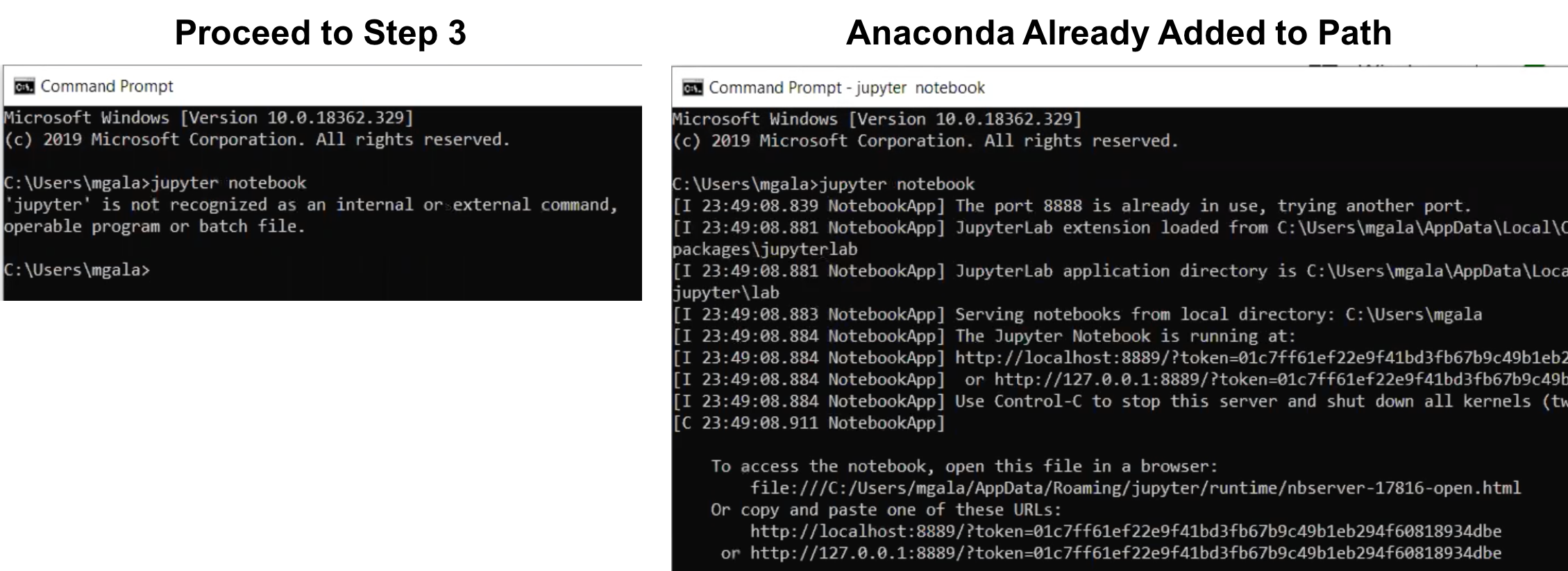

- #PYTHON COMMAND PROMPT WINDOWS 10 HOW TO#
- #PYTHON COMMAND PROMPT WINDOWS 10 UPDATE#
- #PYTHON COMMAND PROMPT WINDOWS 10 MANUAL#
- #PYTHON COMMAND PROMPT WINDOWS 10 ARCHIVE#
#PYTHON COMMAND PROMPT WINDOWS 10 HOW TO#
How to manually install a Python package:
#PYTHON COMMAND PROMPT WINDOWS 10 MANUAL#
If you have a package that’s not compatible, then you’ll need to do a manual installation. Most Python packages are now designed to be compatible with pip. For example, the following command installs the requests package from a Github repository: pipenv install -e git+ Manual Package Installation You can also install packages from locations other than PyPI. For example, the following command installs a named package from PyPI: pipenv install To install, upgrade or uninstall packages within pipenv, just replace the pip command with pipenv. Like venv, pipenv automatically creates a separate virtual environment for each project. It uses pip and virtualenv under the hood, and simplifies their usage with a single command line syntax. Pipenv is a new tool for managing dependencies. To show help for pip, including complete command usage and options: pip -h pip -help Pipenv To upgrade a package that is already installed: pip install -upgrade To install a package from a repository other than PyPI, for instance, Github: pip install -e git+ Pip install -upgrade pip wheel Pip Package Installation
#PYTHON COMMAND PROMPT WINDOWS 10 UPDATE#

Appveyor offers a hosted continuous integration service that developers can use to package Python code for Windows deployments. whl extension, and provide a simpler installation than ‘non-wheel’ packages.ĭepending on the operating system that a package was built for and built on, the resulting wheel may not include file requirements for Windows.
#PYTHON COMMAND PROMPT WINDOWS 10 ARCHIVE#
A wheel is a zip-style archive that contains all the files necessary for a typical package installation. Python packages installed with pip on Windows are typically bundled into ‘wheels’ prior to installation. For more information on how to use pip, see the Pip Package Installation instructions below.

By default, pip installs packages located in the Python Package Index (PyPI), but can also install from other indexes. The pip command has options for installing, upgrading and deleting packages, and can be run from the Windows command line. Pip is installed automatically with Python 2 (>=2.7.9) and Python 3 (>=3.4) installations. The Pip Package Manager is the de facto standard for managing Python distributions, and is recommended for installing Python packages for Windows.


 0 kommentar(er)
0 kommentar(er)
